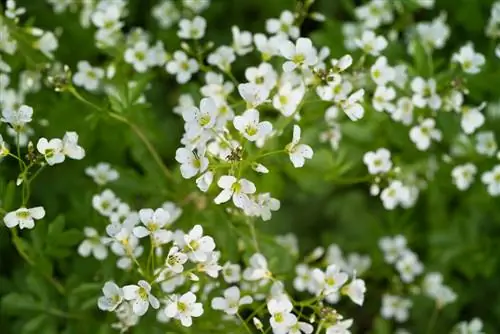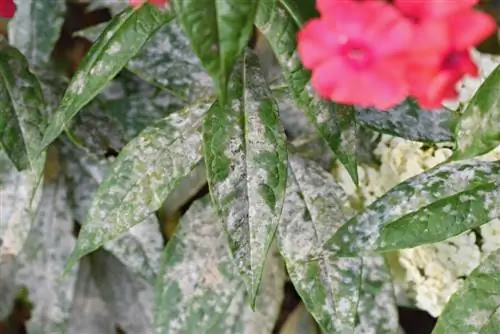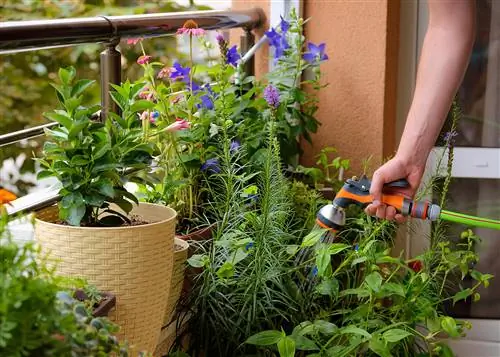- Author admin [email protected].
- Public 2023-12-16 16:46.
- Last modified 2025-01-23 11:22.
The meadowfoam (Cardamine pratensis) is a native wild plant that covers wet meadows in spring with a fragrant, pink pile. The flowers are not only an important source of food for bees, the “wild cress” is also a he althy decoration for many dishes.

Which plant can meadowfoam be confused with?
The meadowfoam (Cardamine pratensis) can easily be confused with the bitter foamweed (Cardamine amara), as both plants have similar flowers, stems and leaf shapes. The taste of both is reminiscent of cress, but the bitter foam herb is more bitter. Both variants are edible and not poisonous.
Which plants can you confuse the foamwort with?
Meadowfoamand theBitter Foam(Cardamine amara) are so similar that the two plantsare easy to grow confuse are. But this is not dangerous because, as the name suggests, bitter foamweed tastes much bitterer but is not poisonous.
| Meadowfoam | Bitter foamwort | |
|---|---|---|
| Rosette leaves at the base of the shoot | forms a rosette | no rosette |
| leaves | look leafy | rather fine |
In what characteristics are the foam herbs similar?
Flowers, stems and the shape of the leaves are very similar. Both the meadowfoam and the bitter foamweed form an unbranched stem that initially contains pith and later becomes hollow.
- The alternately arranged leaves of both foamy herbs are simple or paired pinnate.
- The flowering period lasts from April to July.
- The flowers have white to pale pink petals.
- They grow together in a loose, umbrella-like inflorescence.
Are there differences in taste?
Tasteboth rememberFoamy herbscress, whereby the bitter foamy herb tastes more bitter than the meadowfoam herb. Both wild herbs are edible and represent a he althy addition to the diet.
Brown seeds ripen in the pods of both variants. You can dry and use these ground. They taste pleasantly spicy and are an inexpensive substitute for real pepper.
Tip
Wash meadowfoam thoroughly
Rinse meadowfoam carefully under running water before use, as the plants are the habitat of small insects, the foam leafhoppers. You can recognize an infestation by the characteristic foam clouds on the wild weeds.






